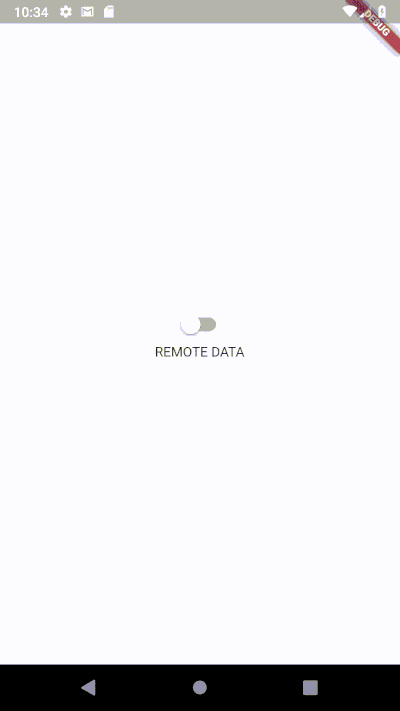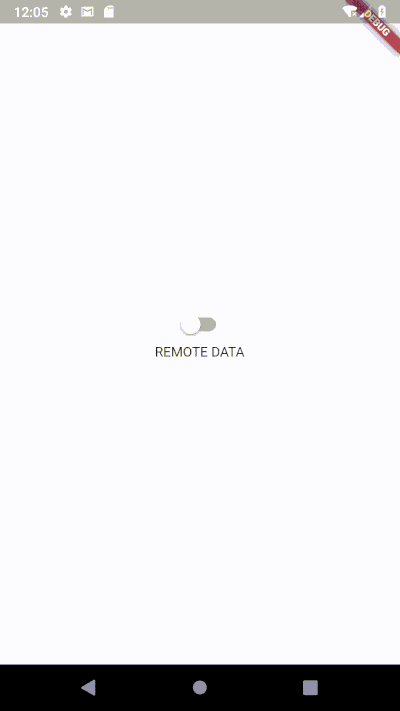textfield reload issue and other things reload problem.===================================
https://github.com/flutter/flutter/issues/18828
https://blog.csdn.net/u011272795/article/details/83010974 <<<<<<<===============
https://medium.com/saugo360/flutter-my-futurebuilder-keeps-firing-6e774830bc2
Flutter: My FutureBuilder Keeps Firing!

If you’ve ever done any serious Flutter development, then you have definitely faced the problem in the title above. But don’t worry, You’re not alone!
What is the problem?
The FutureBuilder widget that Flutter provides us to create widgets based on the state of some future, keeps re-firing that future every time a rebuild happens! The problem is best manifested with this simple example:
void main() => runApp(MyApp());
class MyApp extends StatelessWidget {
@override
Widget build(BuildContext context) {
return MaterialApp(
home: HomeScreen()
);
}
}
class HomeScreen extends StatefulWidget {
@override
_HomeScreenState createState() => _HomeScreenState();
}
class _HomeScreenState extends State<HomeScreen> {
bool _switchValue;
@override
void initState() {
super.initState();
this._switchValue = false;
}
@override
Widget build(BuildContext context) {
return Scaffold(
body: Column(
mainAxisAlignment: MainAxisAlignment.center,
children: <Widget>[
Switch(
value: this._switchValue,
onChanged: (newValue) {
setState(() {
this._switchValue = newValue;
});
},
),
FutureBuilder(
future: this._fetchData(),
builder: (context, snapshot) {
switch (snapshot.connectionState) {
case ConnectionState.none:
case ConnectionState.waiting:
return Center(
child: CircularProgressIndicator()
);
default:
return Center(
child: Text(snapshot.data)
);
}
}
),
],
),
);
}
_fetchData() async {
await Future.delayed(Duration(seconds: 2));
return 'REMOTE DATA';
}
}
- Our app displays a
HomeScreenon which we have oneSwitchwidget and oneFutureBuilderthat loads remote data and displays it on the screen. - The
FutureBuildersubscribes to the future returned from the function_fetchData. This function simulates a server that returns its result after two seconds. - When the user taps the switch, we update the member
_switchValue, which is then fed into the switch itself, to change its actual value.
If you run this app, the following happens:

Flipping the switch affects the state of the FutureBuilder
Even though the switch and the FutureBuilder are not related in any form, every time we change the switch value (by calling setState), the FutureBuilder goes through its whole life-cycle again! It re-fetches the future, causing unneeded traffic, and shows the loading again, causing bad user experience.
This problem manifests itself in a variety of ways. In some cases it’s not even as obvious as the example above. For example:
- Network traffic being generated from pages that are not currently on screen
- Hot reloading not working properly
- Losing the Navigator state when updating values in some Inherited Widgets
- etc…
But what is the cause of all of this? And how can we solve it?
The didUpdateWidget problem
Note: In this section I will take a closer look at how FutureBuilder works. If you’re not interested in this, you can skip to the solution.
If we take a closer look at the code of FutureBuilder, we find that it is a StatefulWidget. As we know, StatefulWidgets maintain a long-livedStateobject. This state has a few methods that manage its life-cycle, like initState, build, and didUpdateWidget. initState is called only once when the state object is first created, and build is called every time we need to build the widget to display, but what what about didUpdateWidget? This method is called whenever the widget attached to this State object changes. When the widget is rebuilt with new inputs, the old widget is disposed, and a new widget is created and assigned to the State object, and didUpdateWidget is called to do anything we want to do before the rebuild. In case of FutureBuilder, this method looks like this:
@override
void didUpdateWidget(FutureBuilder<T> oldWidget) {
super.didUpdateWidget(oldWidget);
if (oldWidget.future != widget.future) {
if (_activeCallbackIdentity != null) {
_unsubscribe();
_snapshot = _snapshot.inState(ConnectionState.none);
}
_subscribe();
}
}
It’s basically saying: if, when rebuilt, the new widget has a different Future instance than the old one, then repeat everything: unsubscribe, and subscribe again.
Well, that’s the key! If we provide it with the same future, then it will not refire!
But aren’t we providing the same future? we’re calling the same function! well, it’s not the same future instance. Our function is doing exactly the same work, but then returning a new future, different from the old one.
So, what we want to do is to store or cache the output of the function the first time it is called, and then provide this same output whenever the function is called again. This process is known as memoization.
Solution: Memoize the future
Memoization is, in simple terms, caching the return value of a function, and reusing it when that function is called again. Memoization is mostly used in functional languages, where functions are deterministic (they always return the same output for the same inputs), but we can use simple memoization for our problem here, to make sure the FutureBuilder always receives the same future instance.
To do that, we will use Dart’s AsyncMemoizer. This memoizer does exactly what we want! It takes an asynchronous function, calls it the first time it is called, and caches its result. For all subsequent calls to the function, the memoizer returns the same previously calculated future.
Thus, to solve our problem, we start by creating an instance of AsyncMemoizerin our widget:
final AsyncMemoizer _memoizer = AsyncMemoizer();
Note: you shouldn’t instantiate the memoizer inside a StatelessWidget, because Flutter disposes of StatelessWidgets at every rebuild, which basically beats the purpose. You should instantiate it either in a StatefulWidget, or somewhere where it can persist.
Afterwards, we will modify our _fetchData function to use that memoizer:
_fetchData() {
return this._memoizer.runOnce(() async {
await Future.delayed(Duration(seconds: 2));
return 'REMOTE DATA';
});
}
- We wrapped our function with
AsyncMemoizer.runOncewhich does exactly what it sounds like; it runs the function only once, and when called again, returns the cached future.
And that’s it! Our FutureBuilder now only fires the first time around:

Thus, our FutureBuilder was getting confused, and thinking that a new future was passed to it, causing it to refire every time. To solve this, we used Dart’s AsyncMemoizer to pass the same future instance every time.
I hope this has been helpful! Let me know what you think!
textfield reload issue and other things reload problem.===================================的更多相关文章
- eclipse 打开是报错"reload maven project has encountered a problem"
不需要删除整个 .metadata 如果删除这个代价是重新导入全部项目 D:\eclipse-workspace\.metadata\.plugins\org.eclipse.e4.workbench ...
- 在IE浏览器中执行OpenFlashChart的reload方法时无法刷新的解决方法
由于项目需求,需要在网页上利用图表展示相关数据的统计信息,采用了OpenFlashChart技术.OpenFlashChart是一款开源的以Flash和Javascript为技术基础的免费图表,用它能 ...
- javascript 中的location.reload
location.reload()是什么意思 location.reload() 括号内有一个参数 true/false , 为空和false的效果一样. 如果该方法没有规定参数,或者参数是 fals ...
- 把Nginx加入系统服务 service nginx (start | stop | restart | reload)
vim /etc/init.d/nginx 1 #!/bin/bash 2 # nginx Startup script for the Nginx HTTP Server 3 # it is v ...
- 使用Tomcat的Reload提高开发速度(翻译)
欢迎转载http://www.cnblogs.com/coodream2009,有翻译的不太准确的地方请大家指出,我继续修改完善. 按照Java Servlet规范第四部分推荐的,Tomcat系统的实 ...
- layui table数据表格reload where参数保留问题
layui table数据表格reload where参数保留问题 在使用layui过程中多多少少会遇到些问题 table reload 有个坑:reload时where参数会保留上次的参数,如果用 ...
- javascript:location.reload()和location.replace()的区别,及对图片缓存的影响。
有段时间没有清理IE的临时文件(缓存文件),在我清理的时候,我突然发现一个问题. 我打开的一个网站,图片默认缓存一个月的,但我发现,当我上传图片或删除图片之后,图片重新缓存,也就意味着,在我上传新图片 ...
- Python中的reload函数
Python中的import语句可以导入module文件,但是import语句只是第一次导入的时候会执行module文件中的代码,然后就会把导入的模块文件存入到内存,当再次导入的时候,Python是直 ...
- python之reload用法
一.python2和python3的区别 python2中可以直接使用reload().python3中需要从库中导入,有两种方法: >>> from imp import relo ...
随机推荐
- tar:short read problem
1. tar:short read problem description 在PC机上将需要下载到板子上的两个文件夹gdb.ncurses用tar命令打包. 命令如下:tar -cvf test5.t ...
- python全栈开发 * 线程队列 线程池 协程 * 180731
一.线程队列 队列:1.Queue 先进先出 自带锁 数据安全 from queue import Queue from multiprocessing import Queue (IPC队列)2.L ...
- Nginx负载均衡后端健康检查(支持HTTP和TCP)
之前有一篇文章记录nginx负载均衡后端检查,链接为 https://www.cnblogs.com/minseo/p/9511456.html 但是只包含http健康检查不包含tcp下面安装ngin ...
- js_js流程控制
1.表达式.语句 2.流程控制 顺序 分支 循环 分支 循环结构都有一个条件 循环结构:重复做一件事 3元运算符 switch语句(用来做相等性判断--优先考虑) 注意: 1.switch ...
- vlan分类简易解释
注:出自http://wushank.blog.51cto.com/3489095/1305510 收报文: Acess端口1.收到一个报文,判断是否有VLAN信息:如果没有则打上端口的PVID,并进 ...
- 《HTTP - 跨域》
本文参考 HTTP访问控制(CORS) 一:什么是跨域? - 所谓跨域, 是浏览器为了保护网站安全而建立的一种保护策略,既浏览器的同源策略. - 意味着使用这些API的Web应用程序只能从加载应用程序 ...
- jenkin如何实现web版本控制&回退
jenkins本身作为一款运维利器,具备 1. 持续集成 (Continuous integration) 2. 持续交付(Continuous delivery) 3. 持续部署(continuou ...
- Angular+NodeJs+MongoDB搭建前后端程序
get请求: //angular 前端get请求 this.client.get('http://localhost:3000/id/tom').subscribe(data => { cons ...
- Nginx配置选项
--prefix=path 定义一个目录,存放服务器上的文件 ,也就是nginx的安装目录.默认使用 /usr/local/nginx. --sbin-path=path 设置nginx的可执行 ...
- qt 画多边形(实现鼠标拖动节点)
---恢复内容开始--- 2018-01-06 这个小例子实现了移动鼠标,鼠标的坐标信息跟随鼠标移动,多边形的实现,鼠标点击可以拖动多边形点的位置,(其中有个问题?我在QMainWindow下,用mo ...
